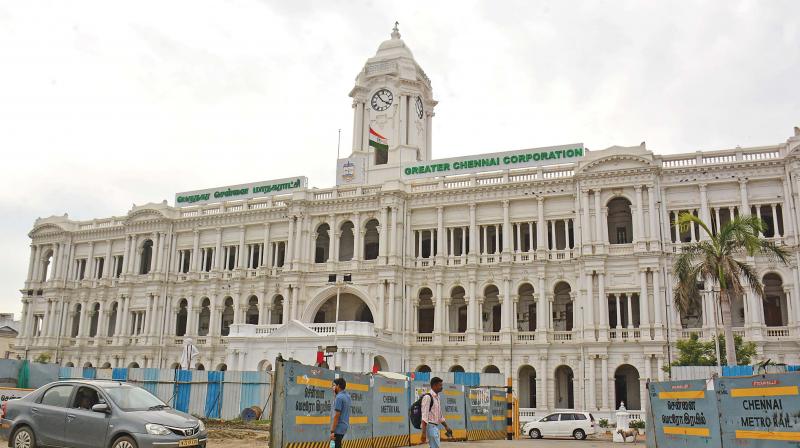Heritage buildings await facelift

Chennai: Chennai, with historically rich records dating from the British era, houses about 2,500 heritage buildings— the highest within any metropolitan area limits in India. While some structures still boast fine Indo-Saracenic architecture, most are in a dilapidated condition due to urbanisation and poor maintenance.
Apart from being evidence of history and places of validation, over the course of time, some have also become alternative spaces of habitation including Ripon buildings, Triplicane police station, LIC building in Parry’s and many other places. A special division, the Building Centre and Conservation Division (BCCD) was created in the public works department (PWD) recently to conserve structures. “The 246-year-old Humayun Mahal in Chepauk palace will soon get a facelift. This will be followed by at least 50 other monuments,” said an official of PWD.
Another heritage committee of the Chennai Metropolitan Development Authority (CMDA) put forth over 250 applications in the past seven years out of which about 20 have been cleared. An official said about 200 buildings would be documented and more than 150 have been documented over the years. CMDA has also proposed a 400-crore project to develop Chennai Central Square near Ripon buildings and Central railway station. Architects said that on-going construction work had caused potential damage to the heritage structures of Chennai including Ripon buildings.
While efforts are being made to conserve authorised heritage buildings under government, a large number of heritage structures owned by individuals that have not been maintained properly are lost through the years.
A forefather in medical facilities
Now the medical capital of the country with advanced technologies and medical facilities, Chennai evolved from that Madras that housed a small hospital to treat the British soldiers. Medical advancements in the city are a contribution from the medicos at various ancient institutions, including Government General Hospital, Stanley Medical College, Madras Medical College, Adyar Cancer Institute and Government Kasturba Gandhi Hospital.
“The first medical institution in India was Rajiv Gandhi Government General Hospital, which sees a footfall of around 1,000-1,500 patients daily. It was originally set up at Fort St George in 1664 but Indians were allowed treatment only after 1842,” said S. Srinivasan, a retired medical personnel of the hospital.
Though India still needs reforms in the field of mental health, the city has offered mental health care at Government Institute of Mental Health since 1794. Next in the row to provide a specialisation in constructive surgeries was a Stanley Medical College and Hospital established in 1799.
“Although the city is known for a widespread network of medical institutions and healthcare in various departments, western form of medicine evolved gradually as Madras Medical College (MMC) was set up in 1835. The institution made a mark for admitting women for the first time in the world,” said retired dean of MMC.
Now named as Government Kasturba Gandhi Hospital, the institution was started as Royal Victoria Hospital for centre and Gosha women by the first woman patient of the world- Mary Ann Dacomb Scharlieb in 1885. Counted among the top most institutes for cancer, Adyar Cancer Institute set up in 1912 by the first Indian women to get MBBS- Dr Muthulakshmi Reddy.
With developments in Siddha and other medical facilities, city is growing as a medical tourism hub.

